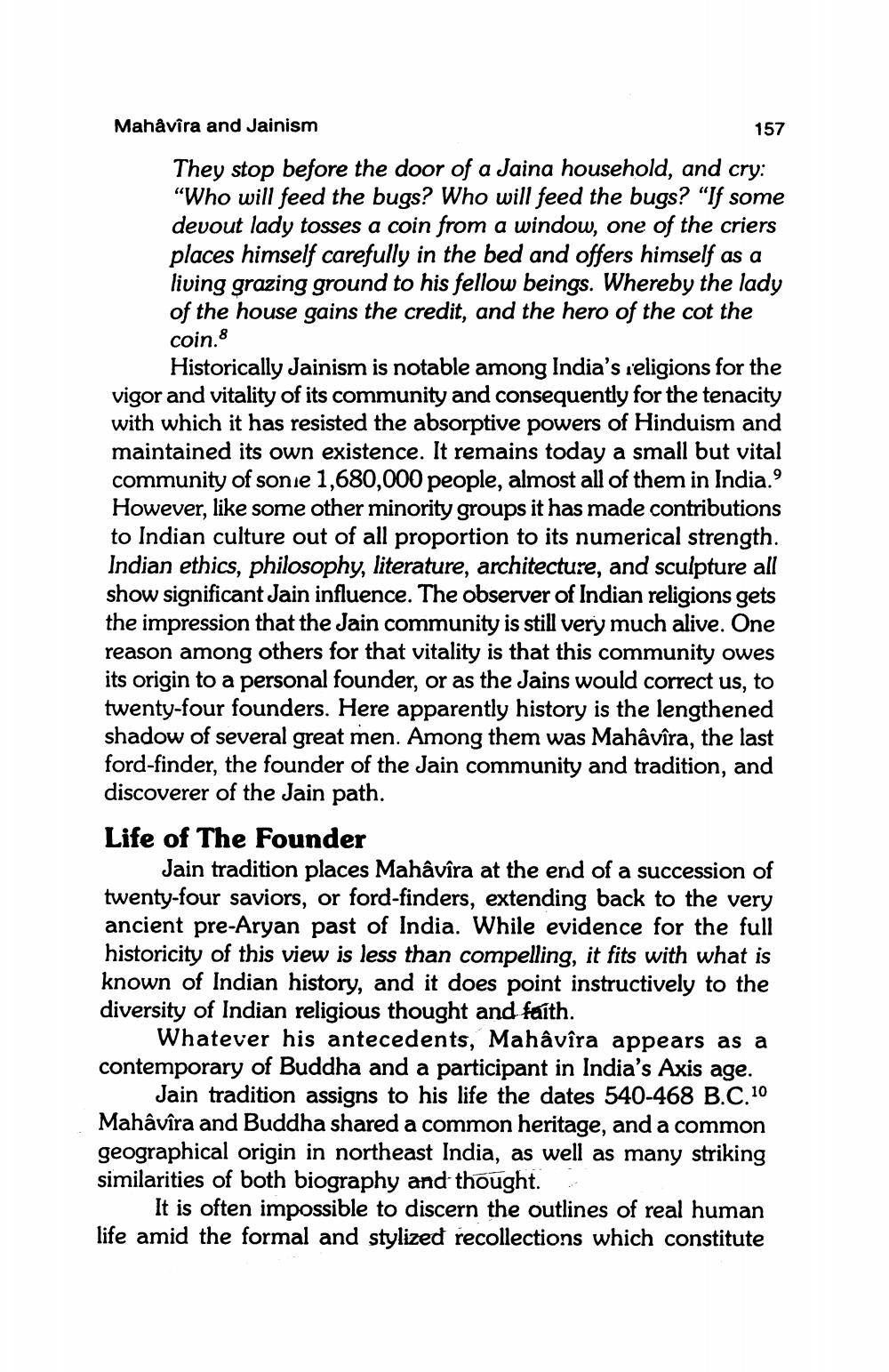________________
Mahȧvîra and Jainism
157
They stop before the door of a Jaina household, and cry: "Who will feed the bugs? Who will feed the bugs? "If some devout lady tosses a coin from a window, one of the criers places himself carefully in the bed and offers himself as a living grazing ground to his fellow beings. Whereby the lady of the house gains the credit, and the hero of the cot the coin.8
Historically Jainism is notable among India's religions for the vigor and vitality of its community and consequently for the tenacity with which it has resisted the absorptive powers of Hinduism and maintained its own existence. It remains today a small but vital community of sonie 1,680,000 people, almost all of them in India.9 However, like some other minority groups it has made contributions to Indian culture out of all proportion to its numerical strength. Indian ethics, philosophy, literature, architecture, and sculpture all show significant Jain influence. The observer of Indian religions gets the impression that the Jain community is still very much alive. One reason among others for that vitality is that this community owes its origin to a personal founder, or as the Jains would correct us, to twenty-four founders. Here apparently history is the lengthened shadow of several great men. Among them was Mahâvîra, the last ford-finder, the founder of the Jain community and tradition, and discoverer of the Jain path.
Life of The Founder
Jain tradition places Mahâvîra at the end of a succession of twenty-four saviors, or ford-finders, extending back to the very ancient pre-Aryan past of India. While evidence for the full historicity of this view is less than compelling, it fits with what is known of Indian history, and it does point instructively to the diversity of Indian religious thought and faith.
Whatever his antecedents, Mahâvîra appears as a contemporary of Buddha and a participant in India's Axis age.
Jain tradition assigns to his life the dates 540-468 B.C.10 Mahâvîra and Buddha shared a common heritage, and a common geographical origin in northeast India, as well as many striking similarities of both biography and thought.
It is often impossible to discern the outlines of real human life amid the formal and stylized recollections which constitute




